Seoul Fashion Week Faces Growing Pains
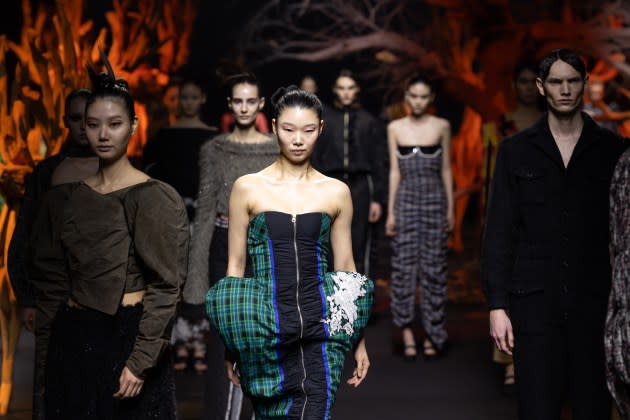
Seoul Fashion Week’s fall 2024 edition was quieter than in the past, taking place just days before Lunar New Year, a major holiday in East Asia where businesses can shut down for up to two weeks.
After resetting its calendar from October to September last season, Seoul Fashion Week opened one month earlier again this season, in February.
But changes can create challenges.
The smaller crowd size this season may be attributed to the substantially colder, subzero temperatures resulting from shifting the date (though that still did not stop fashionistas from donning micro miniskirts and cropped denim jackets).
More from WWD
There was also a venue change. Press, buyers, and fashion enthusiasts had in the past gathered in the Zaha Hadid-designed Dongdaemun Design Plaza, ever since it was inaugurated as a local fashion landmark in March 2014. This season, for the first time in a decade, about a third of the shows were held at S-Factory in Seongsu-dong, with a shuttle bus taking press and buyers back and forth from Dongdaemun.
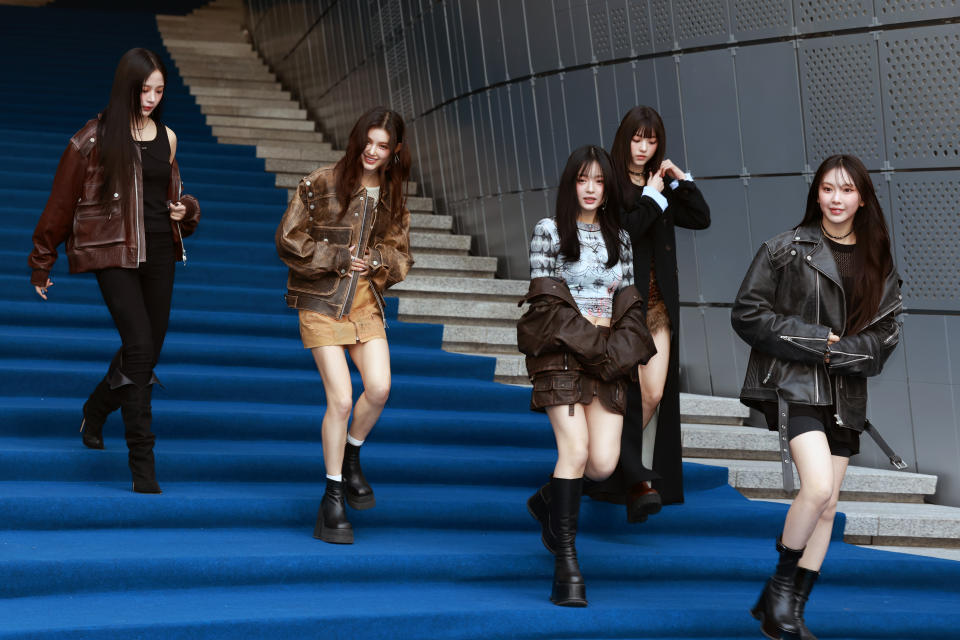
Feelings were mixed about the changes, with some brands like Ul:kin saying the new dates were better for business since buyers had yet spend their budgets in New York, London, Milan or Paris. Others, however, were not yet accustomed to the new schedule.
“It was better when [SFW] was held in March and October. This meant that it came after Paris but before Shanghai [fashion weeks], so there was more incentive for buyers to come to Asia,” said Sam Desner, chief executive officer of 3NY, a concept store in New York that specializes in Asian labels, including more than 40 hailing from Korea.
“It is quieter this season probably because of the change in schedule. International buyers need time to adjust their calendar. But it worked out better for me personally,” Tran Thi Hoai Anh, founder of Runway Vietnam and GlobalLink, told WWD after attending Jiminlee’s show in Seongsu-dong.
The Vietnamese executive also welcomed the expansion to what is the local equivalent of New York’s Meatpacking District. The eastern Seoul neighborhood was once lined with shoe factories and warehouses in the 1980s, and is now home to hipster cafés and experimental concept stores, including a glossy pop-up by Dior.
“I’ve been visiting stores and galleries. I like the area. I can see the trends, and this really adds to the fashion week experience,” said Anh.
Choi Heeseung, the stylist and star YouTuber also known as stylist Unnie Choi Sil Zzang, agreed. “I think showcasing younger designers in Seongsu-dong is befitting, and the warehouse origins of the venue vibes well with the freshness of the up-and-coming labels.”
If Frieze Seoul added to the buzz surrounding SFW in September, brands like Converse took advantage of the event’s presence in Seongsu-dong by showcasing the Feng Chen Wang collection at concept store Empty.
“Seoul is an important market in Asia,” said Mike Kim, Converse Asia Energy marketing manager, explaining why the city was chosen to launch the Chinese designer’s collection outside of Shanghai for the first time. The pop-up was also specifically timed to coincide with fashion week.
However, there was considerably less star wattage this season, with many brands skipping photo ops altogether. Celebrities nevertheless turned heads on the “blue carpet” and at shows. K-pop stars in particular had a big presence, including NewJeans, the mega girl band that serves as SFW ambassadors, and HueningKai of Tomorrow x Together, alongside designer Yoni P; drag artist Nana Youngrong Kim, and Seoul Mayor Oh Se-hoon.
“Korean fashion is very popular in Thailand because of Korean celebrities, through K-pop and TV dramas,” said Tuangruethai Sumalyaporn, senior merchandising department manager for Siam Discovery Bangkok. The Thai department store carries many local labels like Andersson Bell, Ader Error and Mardi Mercredi, and is seeking more midpriced casual brands.
“K-pop and fashion in K-pop are really blowing up around the world. Fashion is important to artistry, for artists to stand out onstage,” said Brian of the R&B duo Fly to the Sky. “The popularity of K-pop and events like [SFW] really help introduce a lot of Korean designers to the world.”
“I love coming here because Korean designers are unique and like to take risks. It is my 11th time [attending SFW] and I always find new ones to introduce to New York,” said Desner, who also proudly shared that Heidi Klum recently bought a jacket by Maison Nica, one of the newer labels at SFW, from his SoHo store.
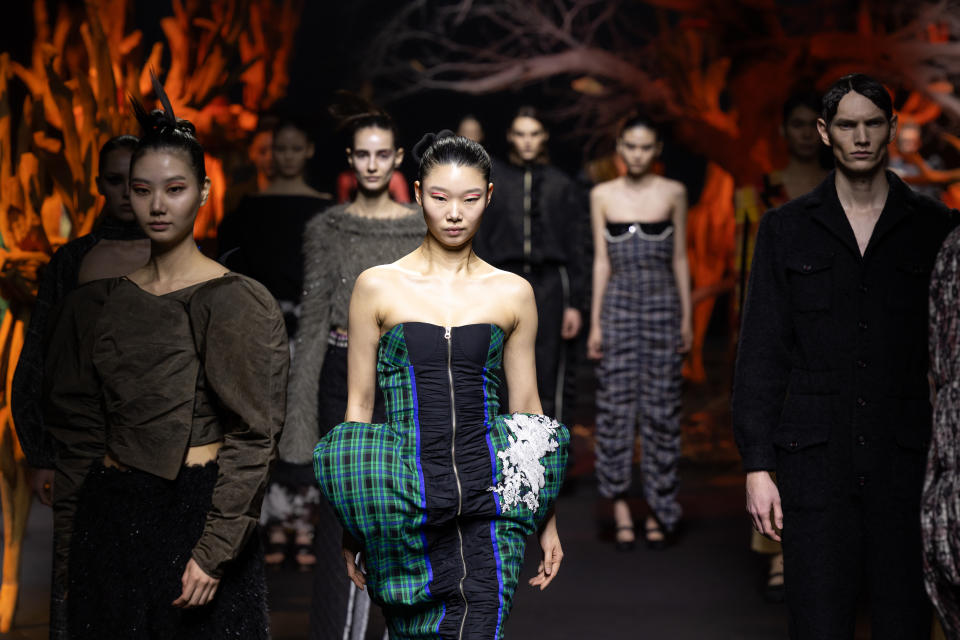
3NY has helped shine an international spotlight on now-famous labels like Greedilous, after clients like Beyoncé were spotted wearing pieces. This year, Greedilous presented more of the bright, polychromatic prints it is known for, from cyan-blue paisley and sequin giraffe motifs to giant black-and-white houndstooth.
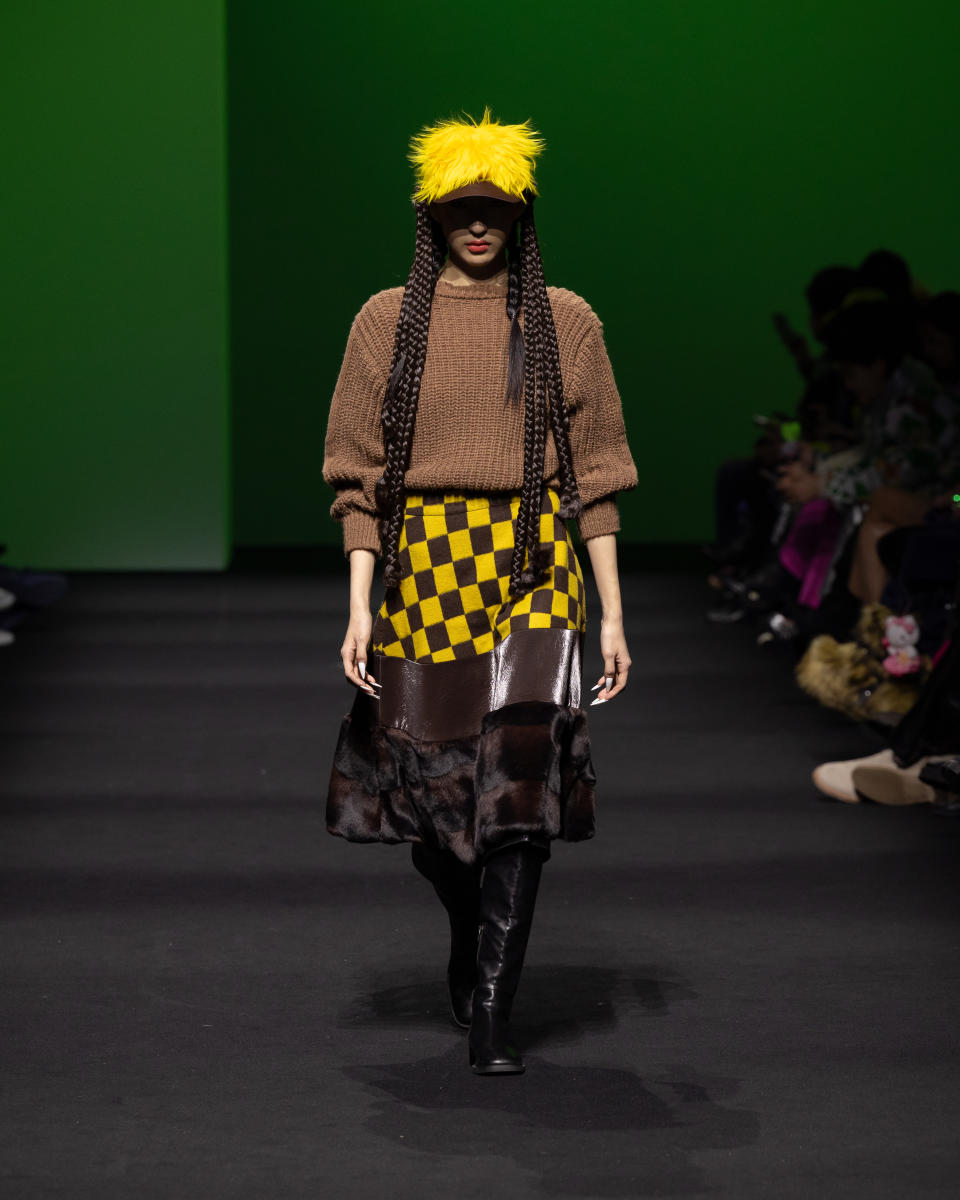
“But it’s a shame that not so many brands were showing this time, because coming to these kinds of events is often about discovering hidden gems,” noted Desner.
Indeed, this season’s SFW was more like a showcase rather than full-fledged fashion week, with only 21 featured brands. It largely was made up of minimal silhouettes espousing quiet luxury, like 02 Armoire and Demoo, or dystopian streetwear like BLR and Ajobyajo.
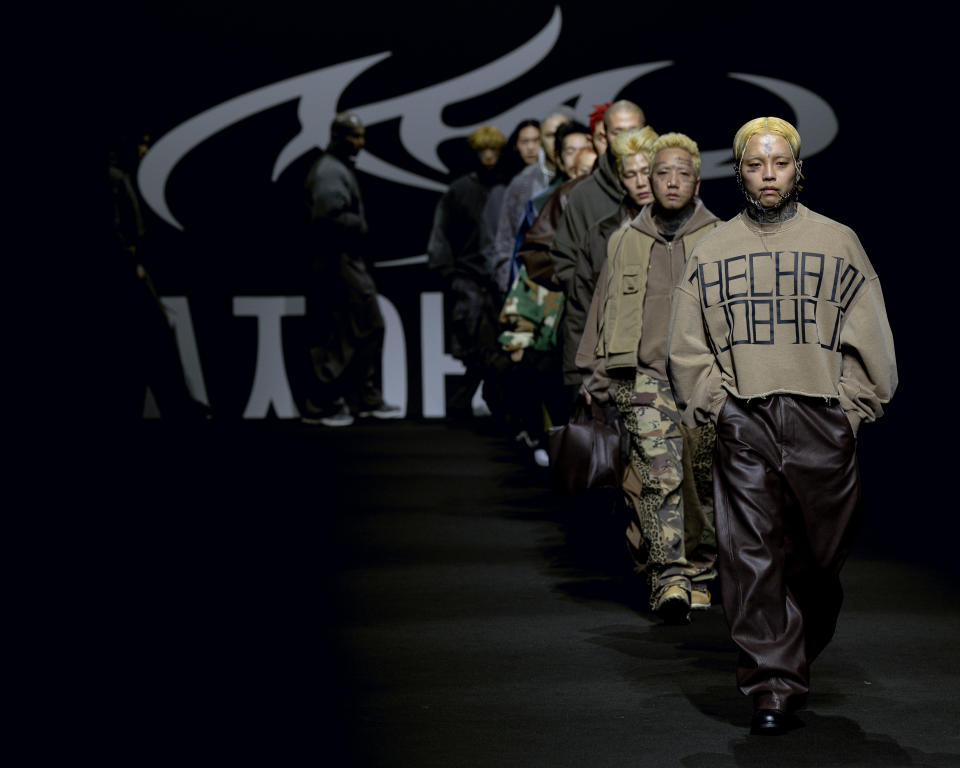
It is a record-low in the history of SFW. There were 30 shows for spring 2024, and organizers had vowed to pull the number back up to pre-pandemic days, when there were over 50.
Lee Chung Chung, CEO and creative director of Lie, was among those who shared Desner’s disappointment about the short lineup. “Buyers who appreciate high-end labels like Lie will want to check out similar looks, or those that appreciate edgy Korean streetwear will look for more casual lines from other brands. This kind of buyer demand is inevitably associated with volume,” said Lee, emphasizing that more brands must be featured. “I understand that SFW has become more selective, but I hope there will be a bigger representation in the future. There are so many talented young Korean designers out there.”
The Seoul metropolitan government, which funds and organizes SFW, confirmed that judging standards became stricter for featured brands, such as placing a bigger focus on international sales. “Before, SFW was more like a culture festival but we are striving to be more business focused. Our aim is to connect buyers with the best local designers, so the bar has become higher,” said Sun MinJoo, senior manager of Seoul City’s Beauty and Fashion Industry Division.
Each year, a panel of local and international judges rates submissions and the one earning the highest points lands the “opening.” As shows had traditionally been showcased in a single venue, the order in which brands were presented had also been decidedly curated regarding the opening and closing shows.
This season’s opening featured Julycolumn, which was a surprise as it operates more like a crafts workshop. The chunky, handmade cable-knit dresses and oversize jackets tailored from recycled materials were certainly retro-chic. But the designs are virtually produced as one-of-a-kind pieces in tiny capsule collections, and the brand’s vision does not seem to necessarily align with SFW’s aim to emphasize big overseas sales. “I was initially hesitant about presenting as the opening show, because Julycolumn was not created with big runways or buyers in mind,” said creative director Sooy Park.
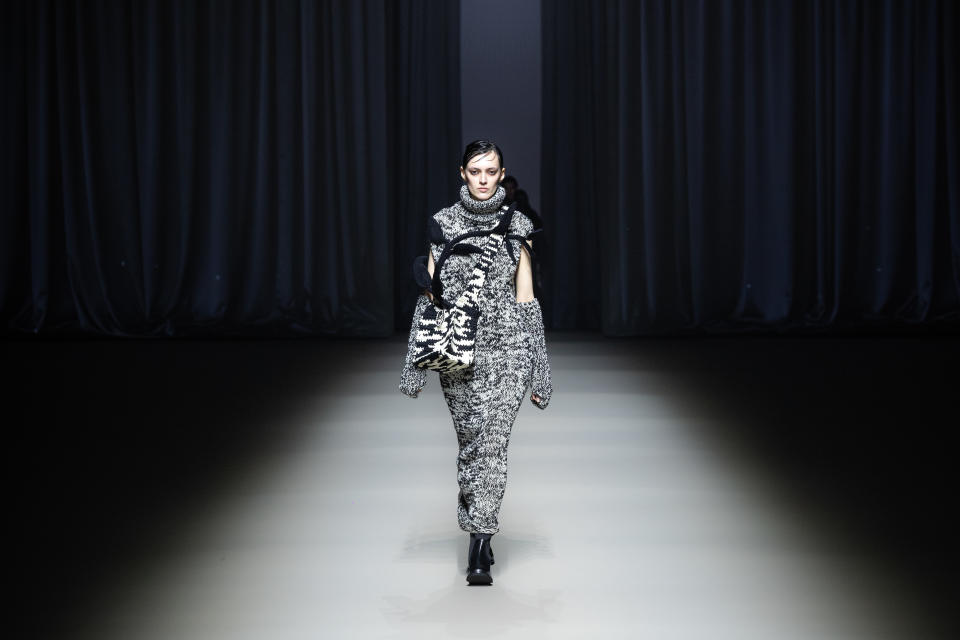
But even many commercial-minded brands are not necessarily jumping at the opportunity to show at SFW. “It is first and foremost important for SFW to be a stage where Korean designers desperately want to present,” said a veteran designer, who asked not to be named, explaining that the number of brands submitting to SFW has declined.
Internationally recognized brands like Wooyoungmi or Andersson Bell have long left Seoul for European stages, but even emerging labels that made a splash last season were missing. Vegan Tiger, known for its cruelty-free materials; People of the World, noted for its edgy collaboration with Reebok, and Seokwoon Yoon, whose namesake designer formerly worked for Gap, only participated in the SFW trade show. All three brands told WWD that they decided not to present on the runway to focus on overseas showrooms.
It is worth noting that Seoul city’s annual budget for SFW was cut, from roughly 6.2 billion won, or $4.7 million, in 2023 to 5.5 billion won, or $4.1 million, this year. According to Sun, this is due to an overall decline in Seoul’s total budget. But the city allotted more funding for a separate fashion initiative called Seoul Fashion Road, which will be integrated with SFW in future editions.
The trade show this year was also considerably reduced. A total of 68 brands were shown, or about three-quarters of the 94 in the previous edition. According to organizers, 102 foreign buyers from 23 countries attended, compared to 125 from 27 countries last season. But sales are not expected to fall too far, with the number of buyer meetings totaling 1,173. This is close to last fall, which saw buyer meetings worth $5.1 million in contracts via 1,134 meetings. Notable attendees this year included Harvey Nichols, Lane Crawford and Andrea Murkudis.
While SFW was overall smaller, featured designers were loud in presenting their messages. Lie presented its signature architectural tailoring in a wide range of looks, from business-core to athleisure. Inspired by the 1990 Paris Olympics, the “All-lympics” collection was presented by a diverse range of models, including a quadriplegic dance sport professional.
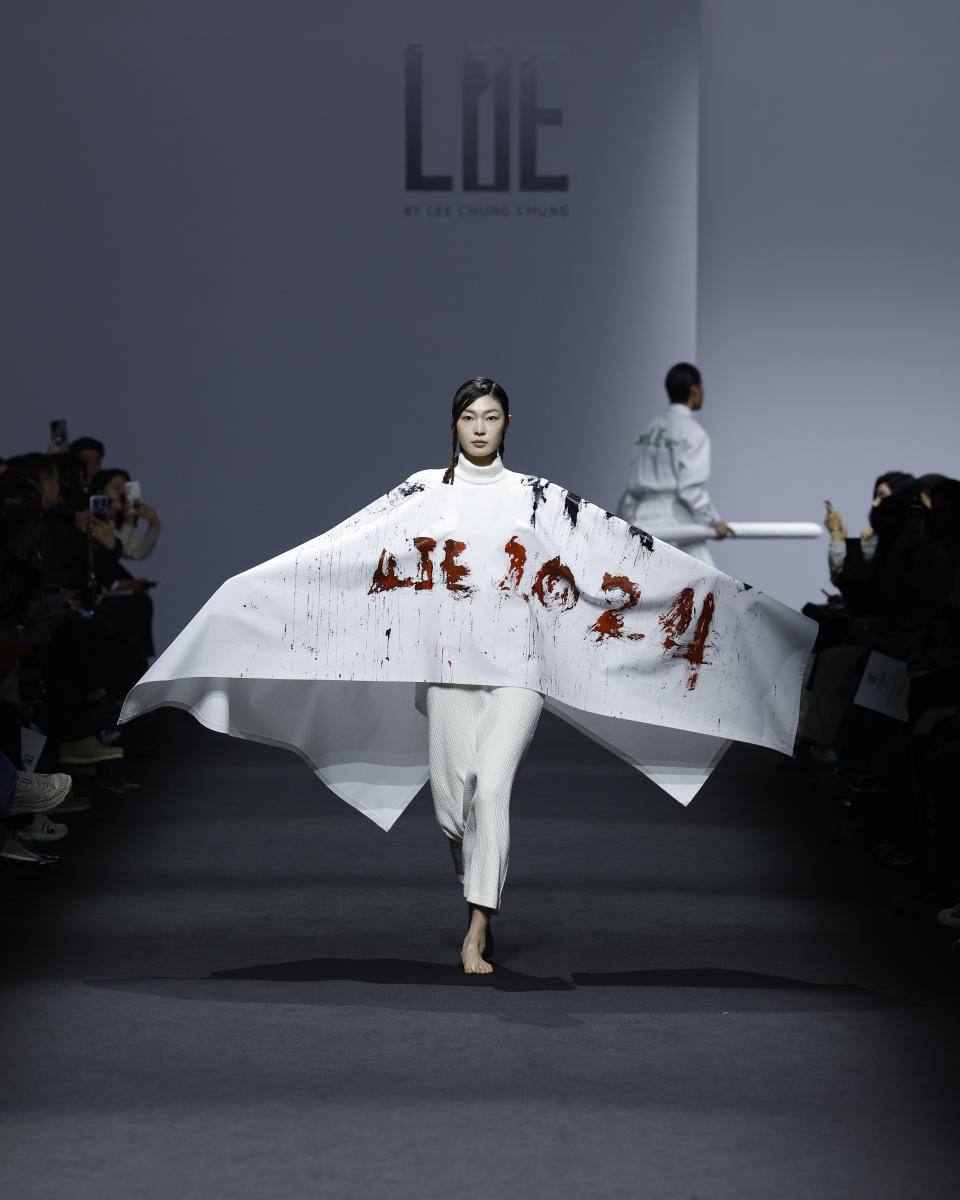
Ul:kin also celebrated human rights, collaborating with the local government to support refugees of the Korean War. The Korean Peninsula remains divided as a result of the Cold War, and the Unification Ministry recently launched a logo of three forget-me-nots to commemorate abductees, detainees and South Korean prisoners of war. Blue flowers adorned knitwear in a Marimekko-esque way at first glance, but a closer inspection revealed artfully distressed details that the streetwear brand is known for.
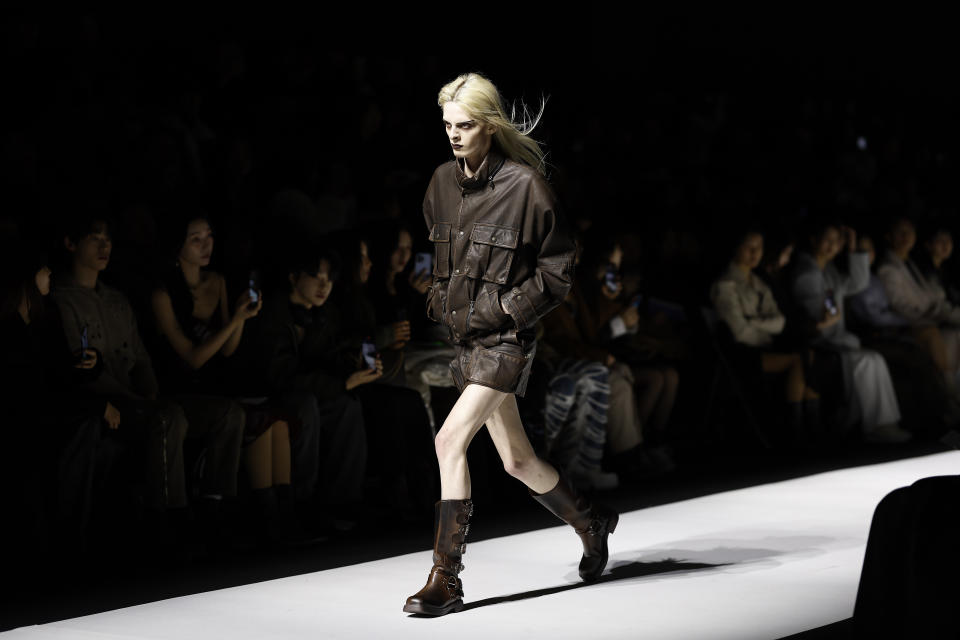
“My grandfather is a refugee from the North, so it’s personally a very meaningful project,” said Ul:kin designer Lee Seong-dong about the collection, which saw attendance by various government officials and foreign dignitaries.
But even established brands have room for improvement, especially in terms of size.
“Many Korean brands are great in terms of price and material, but it’s not so consistent size-wise,” said U.S. buyer Lina Nicole Palmer of Underground Fashion Boutique, who has been working with Korean brands for 19 years.
By “size,” Palmer means both the local sizing, which does not translate easily to foreign markets, as well as the stock keeping units. She also pointed out that even veteran designers are often not familiar with the international order process and other logistical factors.
The buyer added, “I hope SFW can help educate brands about such technical details. Many buyers like myself are not here to simply buy clothes. It is about quality and storytelling, and more often wanting to be part of a brand’s growth.”
Best of WWD

